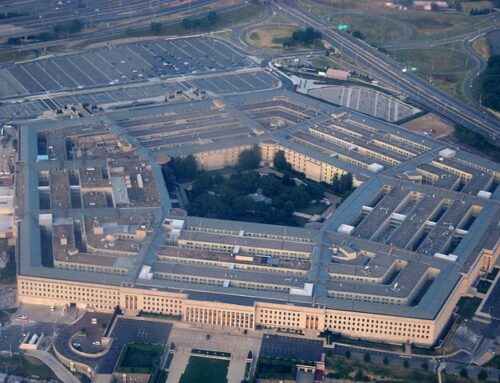One lesson Congress flunks over and over is the Economics 101 principle of sunk costs. Your mother knew it well: She always told you “don’t throw good money after bad.” Lawmakers will have another opportunity to get the answer right this fall when they decide whether to build a second engine for the Navy’s next-generation fighter plane. We’ll provide the cheat sheet on this one: Don’t do it.
Defense Secretary Robert Gates has decreed the F-35 Joint Strike Fighter (JSF) aircraft our military future in the skies. Thirteen years into Lockheed Martin’s contract, the $250 billion-dollar program is behind schedule, and Gates has cut back on other programs in the defense budget in order to invest in the F-35’s success.
One such program would develop a second engine for the plane in addition to the one Pratt & Whitney of Connecticut was originally contracted to build. Congress first allocated money for the alternate engine—a collaboration of General Electric of Ohio and Rolls Royce, which is based in the United Kingdom but operates a plant in Indianapolis—in 1996 on the argument that competition would drive contractors’ performance up and prices down.
But a number of studies commissioned from various agencies on whether or not a second F-35 engine program would save money found that cost savings would be negligible at best. Potential savings were greatly reduced when the high price of maintaining two separate production lines, supply chains and management teams was factored in. Plus, any cost savings would take at least a decade to realize because the second engine is so far behind developmentally.
Some proponents claim other potential benefits to a second engine, including industrial base sustainment, contracting accountability and convenience for our international partners. In a perfect world, perhaps these issues would be more important than cost. But fighting two wars in a desolate economic environment does not afford us the luxury of spending billions to address them all. And the termination of one contract, no matter how large, won’t cripple our industrial base: A $636 billion defense budget should provide plenty of projects for defense contractors in the foreseeable future.
The Defense Department has tried to stop funding for the alternate engine for three years now, but Congress keeps plugging money back into defense appropriations bills. The ante was upped this year when the Obama administration threatened to veto the 2010 defense bill if it contained provisions that could “disrupt” the program. “Expenditures on an alternate engine for the JSF are unnecessary and divert resources from the overall JSF program,” the administration said.
But lawmakers have shown they are willing to employ significant shenanigans to spread the $100 billion engine market around as many districts as possible. The House added $560 million for the program in their version of the bill this summer, but Senate Appropriations Chairman Daniel Inouye (D-HI)—who has historically supported the program—opted not to include the money in the Senate bill, deferring the debate until conference.
This appears engineered to allow Congressional boosters time to come up with a report on the program’s “sunk costs.” Since the $2.5 billion added to spending bills for the program over the past 12 years is public knowledge, we can only assume this report represents an attempt to inflate the number by adding associated costs. Sounds like lawmakers are betting that taxpayers haven’t learned their economic lessons either. But we can all understand mother’s lesson—don’t throw good money after bad.











Get Social